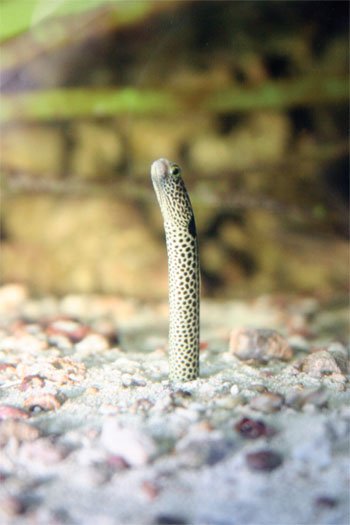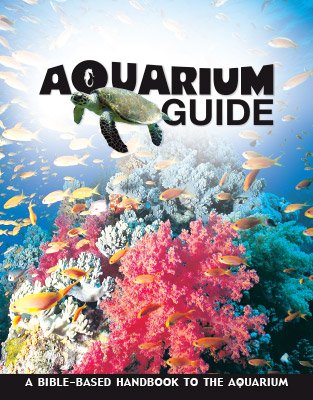Spotted Garden Eel
Tightening its muscular body to make itself rigid, the spotted garden eel drives its pointy tail deep into the sandy sea floor.
Design

Tightening its muscular body to make itself rigid, the spotted garden eel drives its pointy tail deep into the sandy sea floor. The skin in its tail contains a hard substance, so it isn’t hurt. Once the eel is deep enough, it wiggles its dorsal fin, pushing sand out of the hole. Slime from the eel’s skin cements the walls of its burrow, preventing cave-ins.
Features
- The spotted garden eel resembles a worm with a white body covered in small black spots. There are three prominent black patches located on the body.
Fun Facts
- When feeding, the spotted garden eel rises out of its burrow, exposing up to two-thirds of its body.
- Each eel lives in a single burrow, which it rarely leaves.
- Several hundred of these creatures may live together in a colony, swaying in the current like blades of seagrass.
- Juveniles are entirely black.
- When disturbed, the spotted garden eel retreats back into its hole.
CLASS: Actinopterygii (ray-finned fishes)
ORDER: Aulopiformes (lizardfishes and relatives)
FAMILY: Congridae (marine eels)
GENUS/SPECIES: Heteroconger hassi
Size: Up to 16 in (40 cm)
Depth: 23–150 ft (7–45 m)
Diet: Plankton
Habitat: Sandy bottoms near coral reefs in Indo-Pacific oceans from the Red
Sea to Australasia and in the Pacific from New Caledonia to the Ryukyu Islands
Aquarium Guide
This long-awaited Aquarium Guide includes beautiful pictures and reveals the incredible facts and design features that point to our amazing Creator.
Browse Kids Book- © 2025 Answers in Genesis
- Privacy Policy
- Contact
- About

